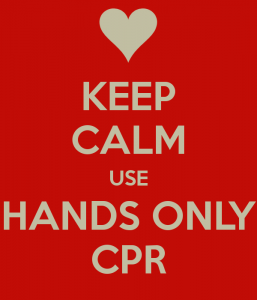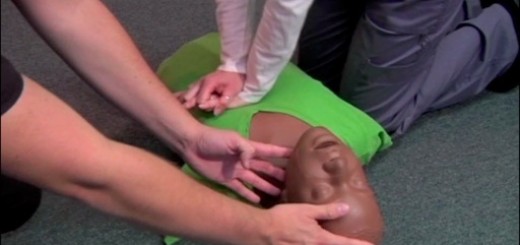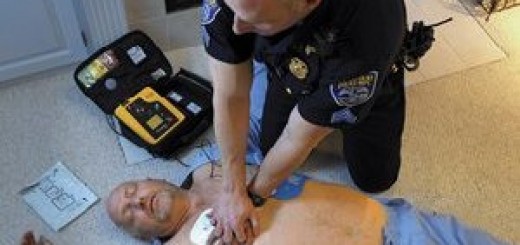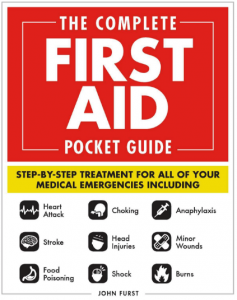A guide to Hands Only CPR
CPR is a lifesaving technique used when a patient suffers a cardiac arrest. CPR allows the continuous flow of oxygenated blood to vital organs of the body until medical treatment (defibrillation) is performed to restore normal heart rhythm.
 The best way to learn CPR is by taking a first-aid training course which includes CPR. Online first aid courses also cover CPR techniques.
The best way to learn CPR is by taking a first-aid training course which includes CPR. Online first aid courses also cover CPR techniques.
People who have never performed CPR, are uncomfortable with mouth-to-mouth resuscitation or have a fear of risk of infectious disease being transferred to them from the casualty are advised to perform hands only CPR which only involves continual chest compressions until help arrives.
Before you perform CPR, check:
- That the patient is unconscious: they don’t respond when you tap or shake their shoulder or shout in their ears
- If another person is available to call for emergency medical help. If not available, make the call first before performing CPR.
- If a a defibrillator is available, if so open the defibrillator and follow the voice instructions.
How to perform hands only CPR
- Make sure the casualty is lying flat on the ground.
- Kneel next to the casualty’s chest.
- Place the heel of your hand in the middle of the casualty’s chest between the nipples and place your other hand on top of the first one. Interlock your fingers keeping your elbows straight and your shoulders right above your hands
- Using your upper body weight and arms, push hard, straight down on the casualty’s chest to at least 2 – 3 inches or 5 -6cm
- Keep pushing hard and fast at a rate of 100 – 120compressions per minute. Don’t stop until help arrives or the person is showing signs of life. Sing a fast-paced song (if it helps) to maintain the rhythm, we recommend Stayin Alive!
- Only stop when emergency medical help arrives or you become exhausted.





